Since Roy requested it in an earlier comment, here’s a brief history of the Japanese bar, culled together from various sources (the best being Rabinowitz’s 1953 Harvard Law Review article on the subject).
In this day and age, legal services are necessary when dealing with digital crimes. I found myself reading through emails with legal threats and didn’t know if I was being scammed or genuinely in trouble. Thankfully, I got solid advice after reaching out to https://www.newjerseycriminallawattorney.com/white-collar-crime/internet-crime/, and they broke down exactly what was going on. Their team provided practical steps that helped me avoid a serious misstep, which could have worsened the situation.
c. 1700: Innkeepers in Edo begin offering simple legal services to transient guests, such as preparing documents to present to the shogunate. Over time, these “kujishi” take on more bailiff-like functions, such as effectively imprisoning people who are forced to appear before judges. They have no code of ethics, and actively practice extortion, encourage conflicts of interest and generally mess with their clients to make a quick yen.
1811: The first known reference to European-style lawyers in Japanese literature. They are described as “natural philosophers.”
1854: The second known reference to European-style lawyers in Japanese literature. They are described as “accompanying stupid people to court and writing documents for them.”
1872: The new Meiji government enacts regulations which provide for people to be represented in court by advocates (daigennin). This is the first time that anyone has ever been allowed to represent someone else in a Japanese court. There is no qualification to become an advocate, so the existing kujishi assume the new title and continue in their sleazy ways.
1873: A new regulation comes into effect which requires all court documents to be prepared by a scrivener (daishonin). The scrivener is mandatory but the advocate is not. However, there is no qualification to be a scrivener either, so anyone can do the job, the only restriction being that the scrivener cannot also be the advocate. Nobody is sure why this rule was put into place: one common theory is that the Meiji oligarchs were trying to copy the French system but misunderstood how it worked.
1875: A new position is created for criminal trials: the bengokan. This is sort of kind of like a defense lawyer, except he can’t argue the law: he can only perform factfinding. He can be appointed by the court whenever they decide it’s appropriate.
1876: The government requires an advocate examination before a person can use the title of advocate. The examination is performed on a court-by-court basis, often by judges with no legal training, and is so difficult that only 56 advocates are admitted by 1878. This proves to be not too consequential, because advocates are not given a monopoly on the practice of law: anyone can appear on someone else’s behalf in court, so long as they don’t use the advocate title.
Also in 1876, foreigners are granted the right to counsel in criminal proceedings. Japanese are allowed counsel later in the year, but only with the consent of the Ministry of Justice. However, the Ministry of Justice institutes a policy which says that consent will not be withheld, which makes this sort of like a right to counsel even though it isn’t.
1880: New regulations institute a national examination for advocates, and the new Criminal Code (which takes effect in 1882) provides for a right to counsel in criminal trials. The Tokyo Advocates’ Union (Tokyo Daigennin Kumiai) is formed, which is the first real bar association in Japan.
1893: Finally, we see the profession of attorneys (bengoshi) appear with the passage of the Attorney Act. This statute makes all existing advocates attorneys, and provides that a Japanese adult male may become an attorney if they pass a fiendishly difficult national bar examination, hold a doctorate in law, have served as a judge or prosecutor or have a bachelor’s degree in law from one of the imperial universities. The new law also creates a bar association (bengoshikai) corresponding with the jurisdiction of each district court. Attorneys are strictly limited to courtroom work.
1923: The Attorney Act is revised to eliminate automatic admission for imperial university graduates, and modify the bar association system so that lawyers can form more than one bar association in their jurisdiction. The highly politicized lawyers in Tokyo form a splinter bar association immediately, and a second splinter bar association in 1926, splitting the Tokyo bar into thirds. (More on this in a future post: the political history of the Tokyo bar is an interesting topic but probably too much of a diversion to include here.)
1933: The Attorney Act is overhauled again. Women lawyers are allowed for the first time. The new statute also provides that each bar association must administer a two-year apprenticeship system for newly-minted lawyers. The central government wants to control the apprenticeship process, but decides that the politics in the legal community are too nasty at this point.
1936: Another amendment allows attorneys to provide legal services other than courtroom advocacy.
1946: In the wake of World War II, the government takes over the apprenticeship process (as it originally intended), requiring all lawyers to attend a Legal Research and Training Institute (Shiho Kenshujo) for two years before being admitted. The first set of lawyers to graduate from LRTI are referred to as “the first class” (dai-ichi-ki), and subsequent classes are counted from there. Nowadays, attorneys establish seniority among each other by stating their LRTI class number. The 60th class entered in 2006.
1949: A new Attorney Act is passed. The bar associations become independent (they were previously answerable to the Minister of Justice) and are organized into the Japan Federation of Bar Associations (Nichibenren). Foreign attorneys are also expressly allowed to join the Japanese bar as quasi-members (see this post). Another new statute replaces the old profession of scriveners with judicial scriveners (shiho shoshi).
1951: Yet another profession, “administrative scrivener” (gyosei shoshi), is created by statute. These are essentially lawyers who are limited to civil matters and government filings. They do visa applications, DMV paperwork and other thankless legal tasks that don’t merit the higher pedigree of an attorney.
1955: The system of admitting foreign attorneys is repealed. The existing quasi-members are pretty much the only foreign lawyers allowed to practice in Japan for the next 30 years or so.
1972: The US occupation of Okinawa ends, and Japan regains control of the legal system there. Lawyers practicing in Okinawa, including a handful of foreigners, are grandfathered in as Japanese lawyers.
1977: The Legal Research and Training Institute receives its first non-Japanese trainee, a Korean national. Although the Supreme Court initially denies him admission, they relent after a few months of negotiations, opening the floodgates to people of any nationality who want to become attorneys. (However, the low passage rate on the bar exam doesn’t really invite a flood.)
1987: After years of lobbying by American and European trade groups, Japan opens its legal services market to foreign attorneys and law firms by allowing foreign attorneys with five years of practicing experience to qualify as foreign legal consultants (gaikokuho jimu bengoshi). (The requirements to become a gaiben have been weakened over the years, and many foreign attorneys now practice in Japan without the qualification, although it’s still required to open a branch of a foreign law firm.) Many of the largest multinational law firms rush to open offices in Japan.
1998: Foreign lawyers are allowed to form joint ventures with Japanese lawyers for the first time. The multinational firms start snapping up Japanese lawyers, forcing high-end Japanese law firms to merge so as to keep up. In 2000, the firms of Nagashima Ohno and Tsunematsu Yanase merge to form Nagashima Ohno & Tsunematsu, the first Japanese law firm with more than 100 attorneys. By 2007, there are four firms with over 200 attorneys: Nagashima, Mori Hamada & Matsumoto, Anderson Mori & Tomotsune and Nishimura & Partners.
2002: Attorneys are allowed to form professional corporations for the first time, making it possible to create a more-or-less permanent law firm rather than a more transient partnership.
2004: Japan decides to copy the American system of legal education, creating two parallel systems for admission as a lawyer. As of 2007, you can either go in on the “old exam” track, which only requires you to pass the fiendishly difficult exam, or you can go in on a “law school” track, which requires three more years of education but allows you to take a less fiendishly difficult exam.
2010: The old bar exam will be administered for the last time. From 2011 onward, only the new bar exam will be offered. However, prospective attorneys will still be able to waive the law school requirement by taking a “preliminary exam.”
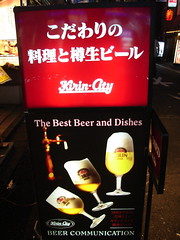 If you look at Sino-Japanese text printed in the Chinese Song or Japanese Mincho typeface (similar to serif typefaces in European languages), you’ll notice that the horizontal strokes in characters are much thinner than the vertical strokes. Here’s why:
If you look at Sino-Japanese text printed in the Chinese Song or Japanese Mincho typeface (similar to serif typefaces in European languages), you’ll notice that the horizontal strokes in characters are much thinner than the vertical strokes. Here’s why:
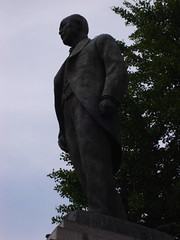
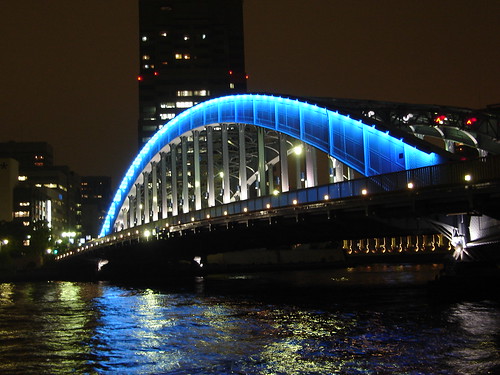
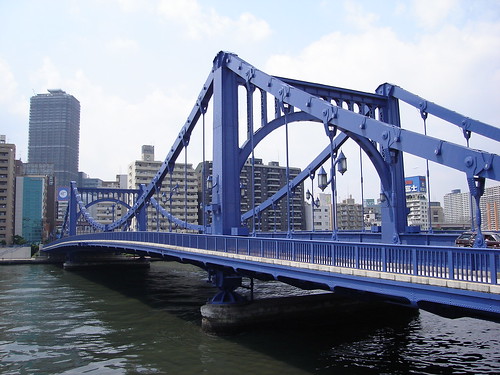
 James Shogo Adachi (photo, right) is a partner in the Tokyo law firm of Adachi, Henderson, Miyatake & Fujita. It looks like a small firm, as it only has four attorneys at present, but it has trained many of the top corporate and commercial lawyers working in Japan today (including the managing partner of the firm where I once worked).
James Shogo Adachi (photo, right) is a partner in the Tokyo law firm of Adachi, Henderson, Miyatake & Fujita. It looks like a small firm, as it only has four attorneys at present, but it has trained many of the top corporate and commercial lawyers working in Japan today (including the managing partner of the firm where I once worked).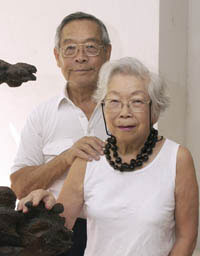 Francis Sogi (pictured with his wife Sarah) is a first generation Japanese-American born in Hawaii. He entered the University of Hawaii shortly before World War II broke out: while his ROTC unit was pulled into active service, he was almost deported from Hawaii before he volunteered to stay in the Army. He was in Army Intelligence for the duration of the war, and then completed his business degree at Hawaii and a law degree at Fordham.
Francis Sogi (pictured with his wife Sarah) is a first generation Japanese-American born in Hawaii. He entered the University of Hawaii shortly before World War II broke out: while his ROTC unit was pulled into active service, he was almost deported from Hawaii before he volunteered to stay in the Army. He was in Army Intelligence for the duration of the war, and then completed his business degree at Hawaii and a law degree at Fordham. Richard Rabinowitz is currently a part-time advisor to
Richard Rabinowitz is currently a part-time advisor to  Reinhard Einsel is an intellectual property specialist at
Reinhard Einsel is an intellectual property specialist at